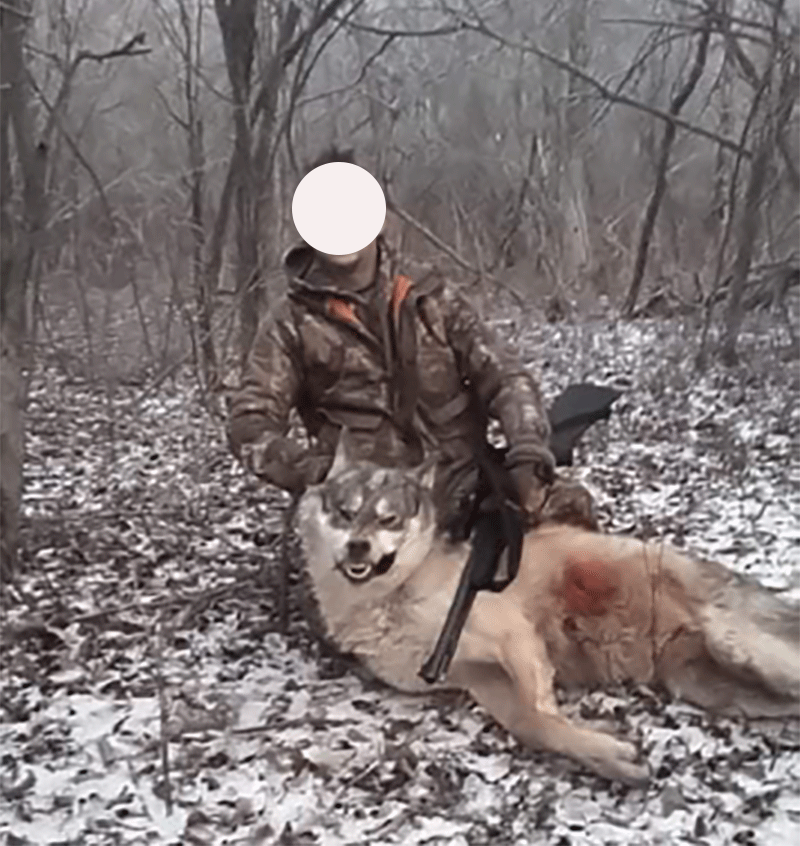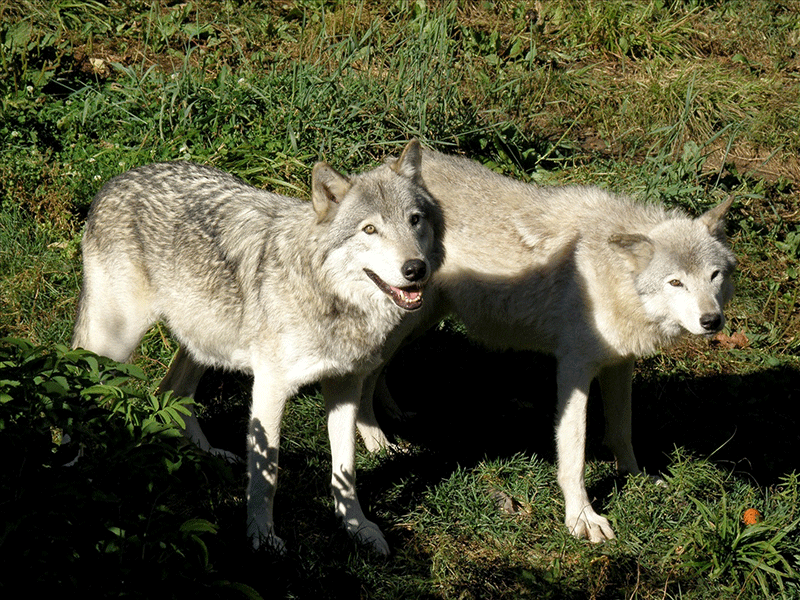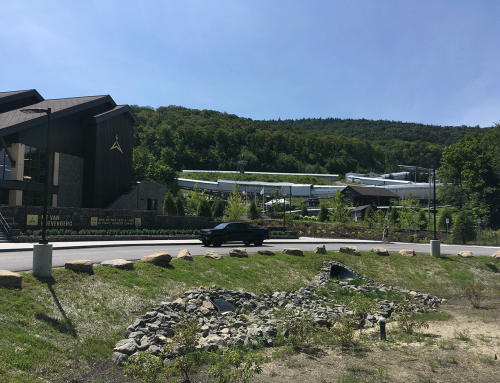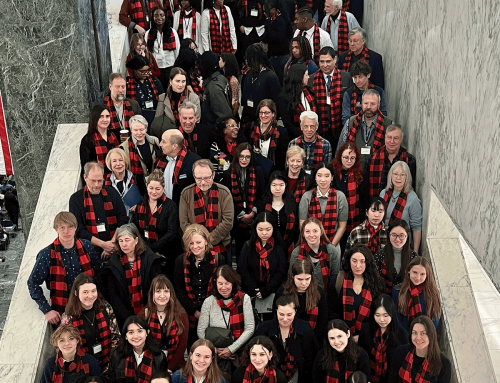In December 2021, a hunter outside of Cooperstown, New York, shot what he believed was a really big coyote. He posted pictures on social media about his prize. These pictures circulated among the hunting community, some of whom were wolf recovery activists, who saw many features in the photographs of the dead 85-pound canid to be wolf-like. The size of the animal, the size of its paws, the size of its head, its weight reported at over 80 pounds, and its color all pointed to a wolf, not simply a really big coyote.
Activists from the Northeast Ecological Recovery Society (NERS) contacted the hunter and asked if they could obtain a sample from the animal to do a DNA test. There had been confirmed wolves in New York and the Northeast US in recent years, but this was one in real time. NERS contacted groups in its network, such as Protect the Adirondacks, about the incident. There was broad agreement to pursue a DNA test and Protect the Adirondacks was happy to pay for it. A sample was obtained over the winter and sent out for processing.

A picture circulated on social media of the large canid shot outside of Cooperstown, New York, in December 2021. Independent DNA testing found this canid to be 98% wolf.
The results of a DNA analysis, completed in July 2022 by the Natural Resources DNA Profiling & Forensic Centre in Ontario, Canada, concluded that this most recent fatality was a combination of Great Lakes, Northwest Territory and Eastern gray wolf genetic composition, all subspecies of Canis lupus. The report further concluded that the genetic makeup of the animal was approximately 98% Canis lupus. The report’s Executive Summary stated “The sample submitted yielded sufficient DNA to allow for genetic assignment among Canadian Canis categories in context of an in-house reference database. The sample was of an admixed nature predominated by Great Lakes wolf ancestry.” The Conclusion is shown in the two charts below.
After initially making no statement, the Department of Environmental Conservation (DEC) DEC spokesperson, Lori Severino stated that in the DEC’s view this wolf was a coyote. Albany News 10 reported:
ALBANY, N.Y. (WTEN) – After a DNA test released Tuesday, July 26, confirmed that an animal shot last December in the Greater Capital Region was a gray wolf, the Department of Environmental Conservation (DEC) said otherwise. “Initial DNA analysis conducted determined the wild canid to be most closely identified as an eastern coyote,” said Lori Severino, a spokesperson for the DEC.
New York’s eastern coyote population, said Severino, has been shown to have a mix of coyote, wolf, and domestic dog genetics, as is the case with the DNA of this animal. DNA tests vary based on the method each lab is using and how results are interpreted by individual scientists, she said.
“As New York’s eastern coyote population has been shown to have a mix genetics, further testing is being conducted to provide more clarity of the genetic composition of this animal,” concluded the DEC spokesperson.
The DEC has not provided any reports or evidence to support its assertion. Protect the Adirondacks submitted a Freedom of Information request to the DEC for these materials.
New York law prohibits the “taking,” defined to include killing, of gray wolves (Canis lupus) because they are listed by the DEC as an endangered species. Environmental Conservation Law (“ECL”) § 11-0535(2); 6 NYCRR Part 182.5(a)(7)(ix). Despite this prohibition, gray wolves have been killed in New York State, with the most recent confirmed fatal shooting of an 85-pound gray wolf occurring in December 2021 near Cooperstown, New York.
Click here to read a letter from Protect the Adirondacks to the Department of Environmental Conservation urging that the department takes strong measures to protect wolves in New York.
New York law imposes both criminal and civil penalties for the illegal take of protected species. An illegal take is a criminal violation punishable by imprisonment for not more than fifteen days, or by a fine of not more than two hundred fifty dollars, or by both such fine and imprisonment. ECL § 71-09239(1). Violators are also subject to a civil penalty of up to two thousand dollars, and an additional penalty of up to three hundred fifty dollars for each protected animal that is the subject of the violation. Id. § 71-0925(13). In addition, ECL § 71-0909(2) provides that the ownership and right of possession of illegally taken protected wildlife vests in the State.
Protect the Adirondacks wrote the DEC in August, urging the department to take immediate action to protect gray wolves in New York State from being unlawfully killed by hunters. PROTECT urges the DEC to investigate the killing of this gray wolf in December 2021. The recent wolf killing shows that the DEC needs to do more to educate the public—particularly hunters—concerning the presence of gray wolves in the State and their protected status as an endangered species. This action is necessary to send a message to hunters that the taking of endangered gray wolves has legal consequences, and that hunters cannot simply shoot any large canid they encounter thinking it’s just a large coyote.
We also urge DEC to initiate a statewide educational program to inform hunters of (i) the presence of gray wolves in the State; (ii) the New York State and federal laws granting protection to gray wolves; and (iii) the criminal and civil sanctions for the unlawful killing and possession of gray wolves. This action is necessary because gray wolves are and will continue to be present in the State, and the DEC has a legal duty to ensure their protection.
The distance between suitable wolf habitat in the Northeast and established gray wolf populations in Canada is “relatively short.” Large, self-sustaining populations of wolves exist in Algonquin Provincial Park, less than 250 miles from the Adirondacks, and Southern Quebec, less than 100 miles.
According to the U.S. Fish and Wildlife Service, wolves can range up to 1,000 square miles in pursuit of prey and studies have indicated that core habitats in the Northeast are easily within an area of wolf dispersal coming from established Canadian wolf populations.
Given the proximity of suitable wolf habitat in the Northeast to established wolf populations in Canada and the Great Lakes and the vast dispersal distances covered by wolves, it is not surprising that wolves have dispersed into Northeast states, including New York. In fact, there is evidence that wolf dispersal into the Northeast has been happening for years and is likely to continue.
Unfortunately, the evidence of gray wolf presence in the Northeast consists primarily of documented killings of wolves. The following is a non-exhaustive list of documented cases of gray wolves in Northeast states since 1990:
- In September 1993, a gray wolf was shot and killed near Moosehead Lake in Maine. Later DNA analysis confirmed that the animal was a wolf.
- In November, 1996, a large canid was trapped and killed near Bangor, Maine. Later DNA analysis revealed that the animal was a wolf with evidence of coyote hybridization.
- In November, 1998, a wolf was shot and killed in Glover, Vermont. The animal’s DNA matched that of wolf populations in the northeastern United States and in Canada.
- On December 19, 2001, a wolf was shot and killed in Day, New York by a hunter who claimed that he thought the animal was a coyote. Later laboratory and DNA analysis confirmed the animal was a gray wolf.
- On April 12, 2005, a wolf was shot and killed in Sterling, New York. DNA analysis confirmed the animal to be a gray wolf.
- In 2005, canid scat was collected near Rangeley, Maine, that was analyzed and identified as consistent with gray wolf DNA.
- On October 1, 2006, a hunter shot and killed a wolf in North Troy, Vermont. Although the hunter asserted that he thought he was shooting at a coyote, a Veterinary Medical Examination Report on the animal identified it as a gray wolf.
- In 2006, there were numerous reports of a potential gray wolf weighing approximately 100 pounds in the Adirondack Park High Peaks Wilderness Area.
- On October 13, 2007, a wolf was shot and killed in Shelbourne, Massachusetts. DNA analysis identified the animal as an eastern gray wolf.
- On an unknown date in mid-2000, a wolf was shot and killed in East Barnet, Vermont, by a hunter who believed the animal to be a coyote. Later DNA analysis determined the animal was at least part wolf.
The preservation and protection of wolves dispersing into New York State is crucial if natural recovery of wolf populations in the Northeast is to be successful. Following steep declines, gray wolves are now established or recolonizing in at least 11 other states. The same rebound is possible in New York, which DEC acknowledges contains “significant suitable habitat” for wolves, including 6,000 square miles of suitable habitat in the Adirondack Park.
DEC states that wolves have successfully recolonized regions of northern Wisconsin and the Michigan Upper Peninsula possessing habitat, places with road and human densities comparable to that of the Adirondack Park.
Protect the Adirondacks is urging DEC to provide gray wolves with the protection from intentional killing that they deserve—and that the law requires—by prosecuting the individual responsible for the most recent wolf killing and by instituting a robust hunter education program to ensure real protection of this endangered species.
Click here to read a letter from Protect the Adirondacks to the Department of Environmental Conservation.








